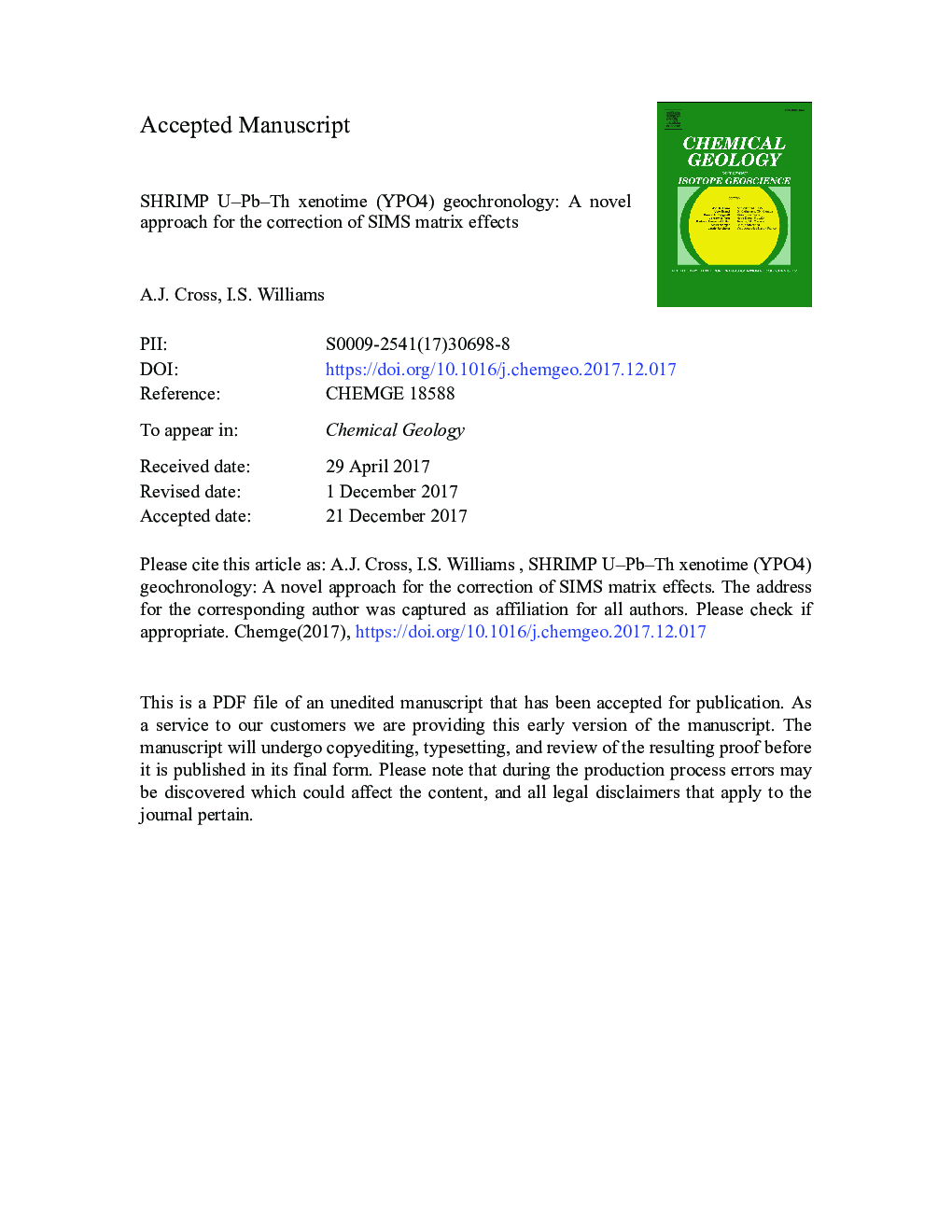| کد مقاله | کد نشریه | سال انتشار | مقاله انگلیسی | نسخه تمام متن |
|---|---|---|---|---|
| 8910252 | 1637490 | 2018 | 74 صفحه PDF | دانلود رایگان |
عنوان انگلیسی مقاله ISI
SHRIMP U-Pb-Th xenotime (YPO4) geochronology: A novel approach for the correction of SIMS matrix effects
دانلود مقاله + سفارش ترجمه
دانلود مقاله ISI انگلیسی
رایگان برای ایرانیان
موضوعات مرتبط
مهندسی و علوم پایه
علوم زمین و سیارات
ژئوشیمی و پترولوژی
پیش نمایش صفحه اول مقاله

چکیده انگلیسی
Xenotime (YPO4) occurs in a wide range of geological environments, but its potential to establish the timing of mineralisation and sediment diagenesis has been the focus of most recent studies. Xenotime in these settings usually has a relatively low uranium content (typically < 1000 ppm) compared to igneous xenotime and occurs as microscopic crystals (< 50 μm diameter), either individually or as outgrowths on zircon substrates. Large radius ion microprobes, such as the SHRIMP or Cameca 1270/1280, that have high sensitivity and spatial resolution, are well suited for U-Pb-Th analysis of xenotime from such environments. SIMS U-Pb-Th analyses of xenotime, however, are prone to significant U-Pb-Th matrix effects that are related to the wide natural range of U (0-6 wt%) and rare earth element (REE) (ΣREE: 12-22 wt%) concentrations in this mineral. For SHRIMP U-Pb-Th xenotime analyses, a 1 wt% increase in U concentration, relative to the U-Pb-Th calibration reference material, will on average cause a corresponding increase in the measured 206Pb/238U and 208Pb/232Th of approximately 15% and 14%, respectively. Similarly, a 1 wt% difference in ΣREE causes an increase of about 1.2% in 206Pb/238U and about 1.7% in 208Pb/232Th. Correction for these chemically-induced matrix effects requires the concurrent analysis of three xenotime reference materials which have known ages and ranges of U and ΣREE contents that have been determined accurately by electron probe microanalysis. A least squares methodology is used to derive correction coefficients that relate the SHRIMP U-Pb-Th matrix effects to the U and ΣREE concentrations for the xenotime reference materials. Crucial to the success of this technique is the use of one dimensional (1-D) calibrations using 206Pb+/270[UO2]+ and 208Pb+/248[ThO]+. Processing is carried out in two steps: (1) derivation of correction coefficients to matrix-correct the 206Pb+/270[UO2]+ and 208Pb+/248[ThO]+ ratios, and (2) processing of the matrix-corrected ratios to determine 206Pb/238U and 208Pb/232Th.
ناشر
Database: Elsevier - ScienceDirect (ساینس دایرکت)
Journal: Chemical Geology - Volume 484, 5 May 2018, Pages 81-108
Journal: Chemical Geology - Volume 484, 5 May 2018, Pages 81-108
نویسندگان
A.J. Cross, I.S. Williams,